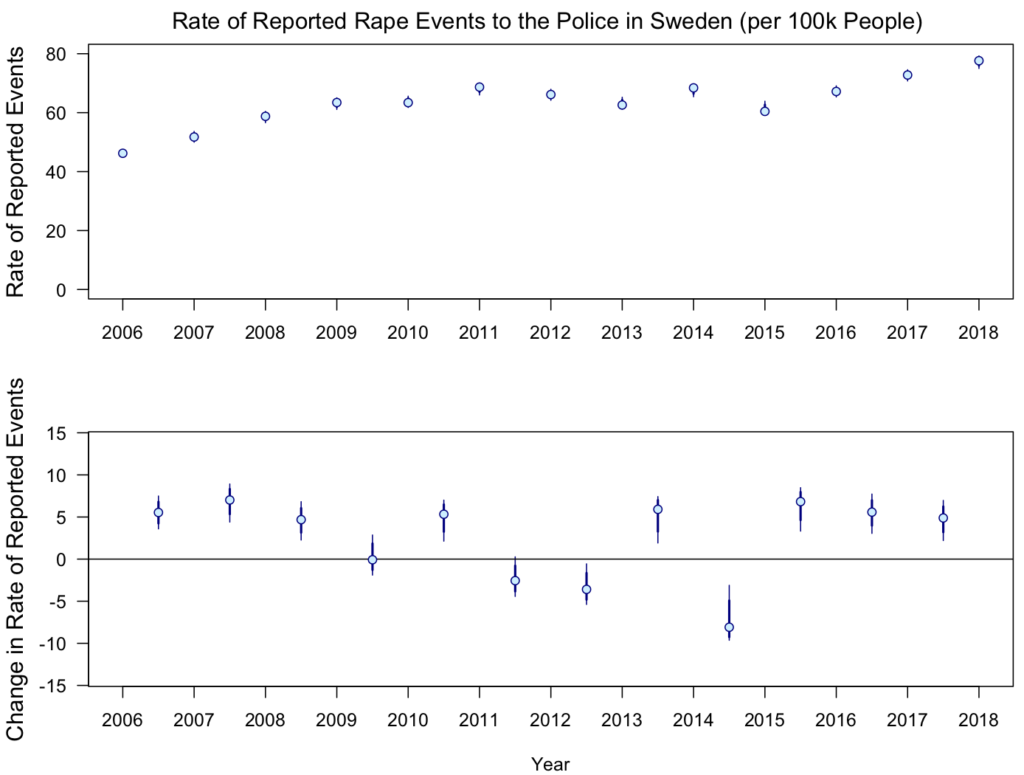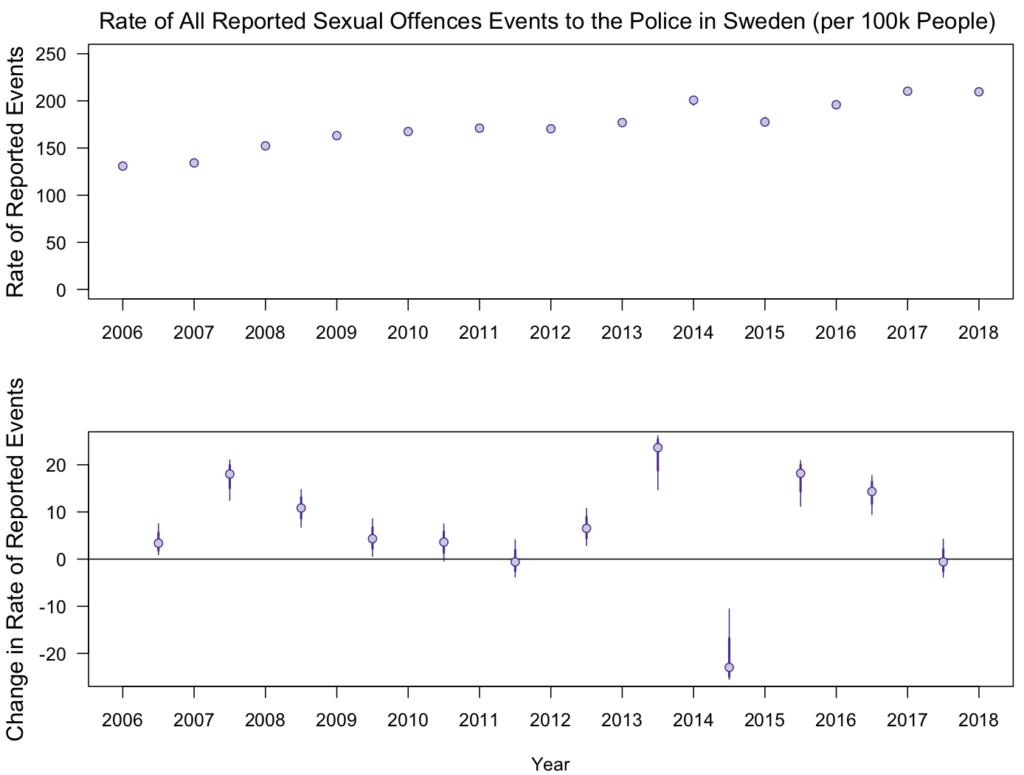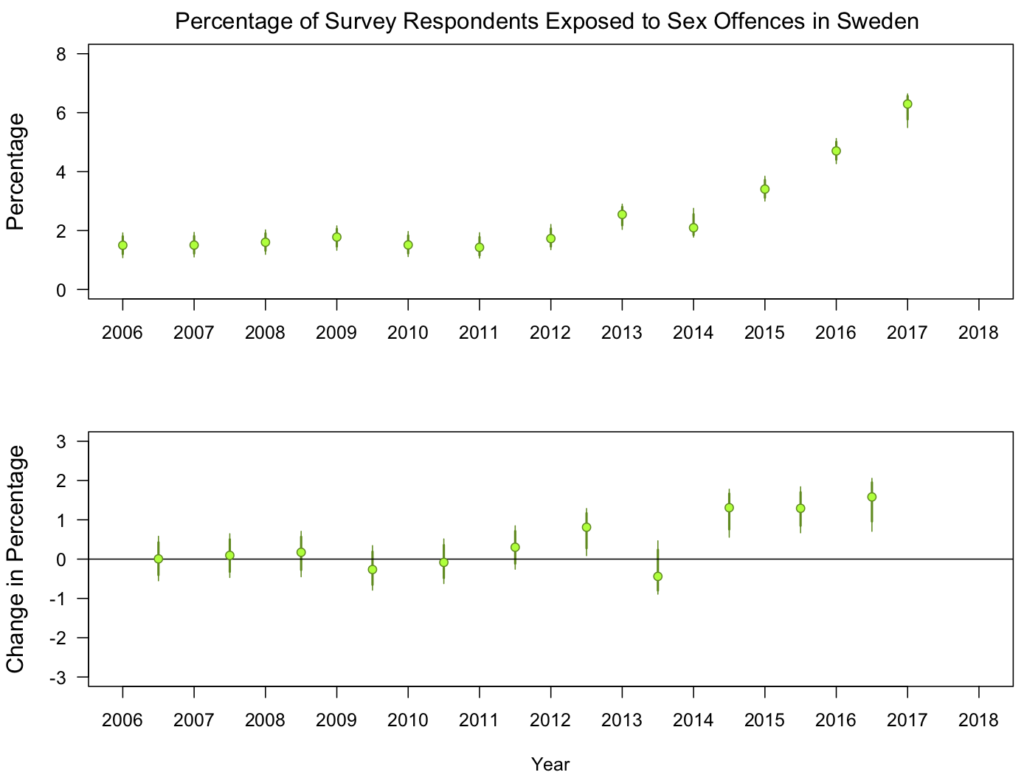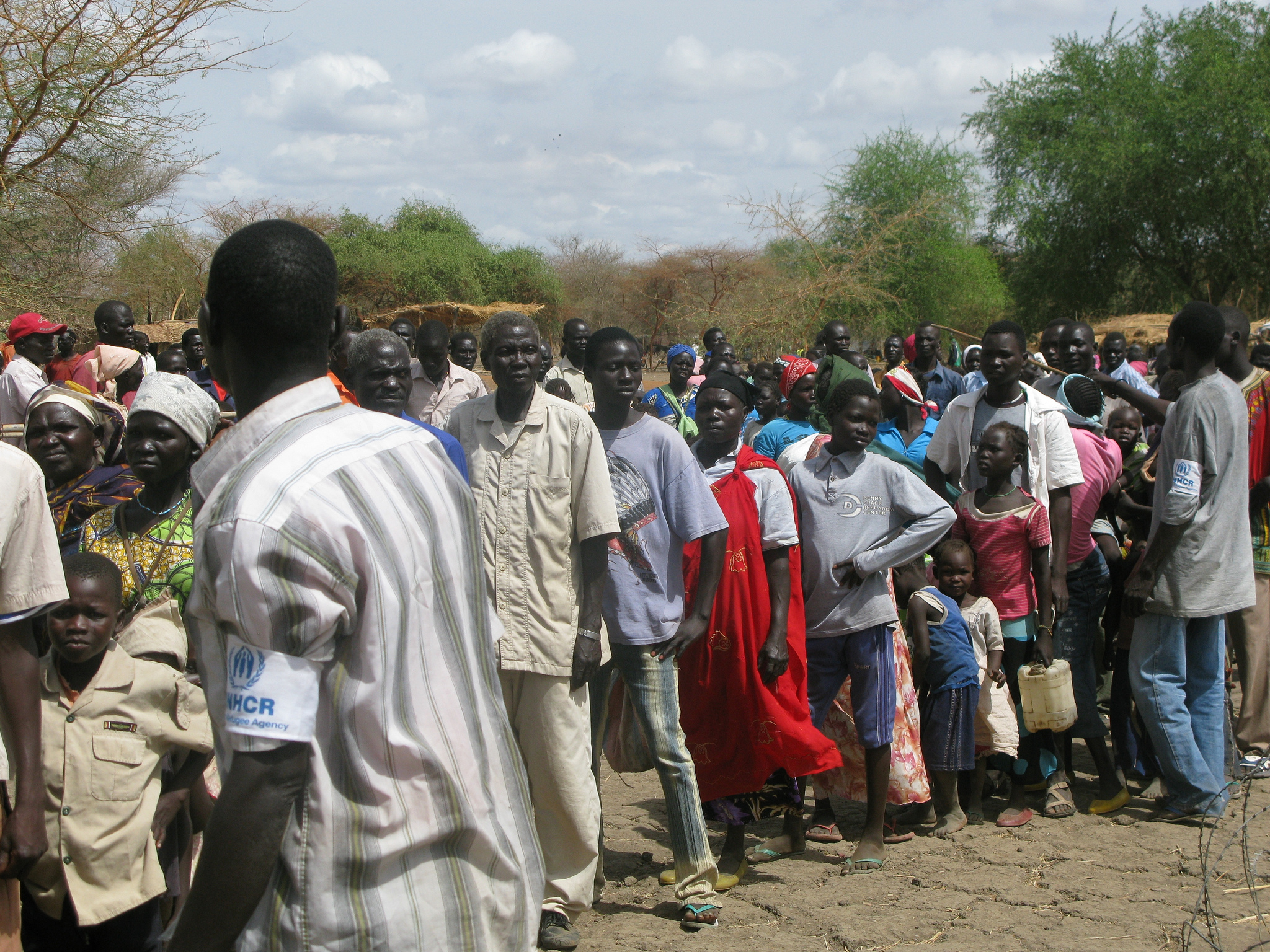Guest post by Kristine Eck and Christopher Fariss.
A month after his inauguration, President Trump brought Sweden into the international spotlight by implying that crime had increased in Sweden as a result of immigration. In the subsequent media storm, right-wing politicians and journalists claimed that rape in particular was on the increase. This discourse mirrored a broader trend, both in the US and globally. For President Trump and others who agree with his world view, if reports of rape are increasing and immigration populations are increasing, then the two trends must be related. Rape statistics are being used by politicians to justify anti-immigration policies.
At the time of Trump’s statement, we pointed out in posts at The Monkey Cage and Political Violence at a Glance that there was no reliable empirical evidence with which to base such a generalization. In the intervening 18 months however, police and hospital reports of rape have begun to show an upswing. Last week the Swedish National Council for Crime Prevention (Brå) released an extensive report commissioned by the government to analyze all available statistics, including whether this upswing could be connected to the 2015 Syrian immigration wave.
Collecting information for rape and sexual assault in Sweden
Events like rape or sexual assault are difficult to observe and therefore difficult to count. Knowledge of these events rests with the victim, the perpetrator, and any witnesses. If none of these individuals report the event to police, doctors, or the government, then the event and experience of the victim “does not count” in the official statistics published each year in Sweden. Perpetrators have obvious reasons for not reporting that they committed a crime. The victims may not report for a variety of social pressures. But this is changing globally, and especially in Sweden.
There are three types of data that provide insights into the causes of this upswing: (1) police reports; (2) survey responses from the annual National Crime Survey; and (3) hospital data for people who sought medical care as a result of sexual assault. None of these sources provide us with a complete accounting of the “true” number of rapes that occur in Sweden, and they all suffer from different weaknesses.
Why sources about rape and sexual assault in Sweden do not always agree
Taken together, the reports compiled by the police, the annual National Crime Survey, and hospital staff provide one of the most detailed accounts of sexual assault and rape in the world. But they are each individually incomplete.
A police report, for example, is probably the most detailed source of information that links information about the experience of a victim and demographic information about the perpetrator. However, filing a police report about a sexual assault may bring about feelings of shame, concerns about not being believed, fear of negative reactions, or a desire for privacy. These social pressures may cause the count of rapes in Sweden to be under reported because some victims do not feel comfortable reporting.
A well-designed, nationally representative survey can ameliorate some of the personal costs of the victims who choose not to provide information about their experiences to the police or doctors. This is because surveys are anonymous and occur in a private setting, often in the privacy of one’s own home. But survey responses are based on memory and perceptions. Individual responses might not always meet the criteria that differentiates the legal definition of rape from other forms of sexual assaults under Swedish law, which is one of the most comprehensive in the world.
The Brå report attempts to address some of these issues. By pairing data from survey respondents who agreed to be identified and police report data, the Brå report finds that not every victim of rape or sexual assault seeks help from the police. What’s more, not every survey respondent accurately classifies their experience with the correct corresponding Swedish legal category.
By combing data from distinct information sources, the Brå report addresses these issues and thus provides a more complete picture about the occurrence of rape in Sweden. Nonetheless, it is important to stress that even with these improvements to the data, we as analysts or an interested public still cannot determine with certainty whether or not the data reflect changes in the true trend of rape or changes to the trend in the reporting of rape.
Where the trends agree and disagree
Accounting for population, police reports show relatively stable levels of reported rape from 2011-2016. Beginning in 2016 through 2018 though, there is a small but noticeable increase in the rate of reports of rape made to the police (Figure 1 and 2). This conclusion is corroborated by the data collected by hospitals. On the other hand, the national crime survey data shows an increase that begins earlier in 2013 that continues to increase at a stable rate for the rest of the reporting period (Figure 3).
Figure 1
Figure 2
Figure 3
Are these increases in reported rapes associated with increases in immigration? As we point out in our posts, Swedish police reports do not include data on ethnic background or immigration status, making it impossible for Brå to use them alone as a basis to analyze whether the 2017 increase is driven by an increase in immigrant perpetrators.
What Brå can do, however, is aggregate the data by municipality to examine whether municipalities which have higher levels of immigrants also saw higher reported levels of rape. This approach is not unproblematic because individuals may be forced to select into living in higher crime areas or may commit crimes outside of the areas in which they live. With the notes of caution in mind, the aggregate approach does provide some leverage on the question. In the aggregate, Brå finds that the data do not support the claim that a there is a link between increased immigration and increasing reports of rape.
Increasing reports of rape is driven by decreasing social tolerance for sexual assault and rape
Instead of sexual assaults and rape being caused by immigrants, the Brå report notes a decreasing social tolerance of rape. The passage of increasingly stringent legislation and a series of highly publicized protests on social media and in public spaces against sexual harassment and sexual violence are part of change in norms of reporting and acceptability.
Debates about immigration are raging in countries throughout the world and it remains one of the most politically charged topics. Because of President Trump’s remark in 2016 and later, Sweden has become a focal point for these discussions. And, though rape is one of the most difficult crimes to accurately measure or count, what the extensive Swedish data show is that there is no evidentiary basis to support claims that immigration has caused an increase in rape or, more precisely, reports of rape. Instead, the evidence suggests that victims of sexual assault and rape in Sweden are more likely to seek help from the police or a hospital than ever before.










3 comments
Dear Kristine Eck and Christopher Fariss,
You show three extensive figures on raising report rates, but the headline thesis is not supported by no numbers at all, just a note: ” In the aggregate, Brå finds that the data do not support the claim that a there is a link between increased immigration and increasing reports of rape.”
Could you deliver some more details?
Also it would be interesting to know whether different reporting behaviour of migrant-victims (many of whom have good reasons not to trust the police) was taken into account.
Thank you
Björn Kunter
I’m not sure how one could make that claim when they are using reports of rape, which have zero way to be linked with immigrants. Was this done intentionally to try to whitewash the recent finding that immigrants vastly over-represent when it comes to rape convictions in Sweden?
This is a complete lie, these reports are whitewashed.